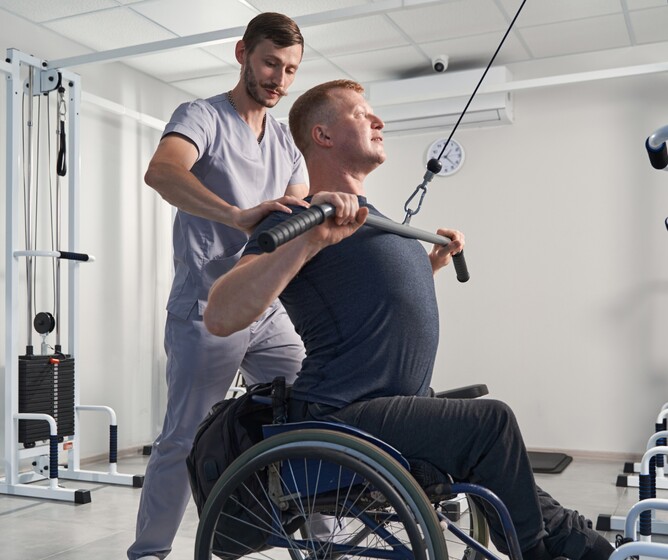Innovative Exercise Physiology Strategies for Spinal Cord Injury Rehabilitation
Spinal cord injuries (SCI) can dramatically affect movement, sensation, and overall bodily functions, often leading to a loss of mobility and independence. For individuals with SCI, recovery and rehabilitation can be challenging, but exercise physiology plays a crucial role in enhancing mobility, strength, and quality of life. By incorporating innovative techniques and personalized programs, exercise physiologists help patients on their journey toward regaining function and independence.
Understanding Spinal Cord Injuries
Spinal cord injuries occur when damage to the spinal cord impairs communication between the brain and the rest of the body. Depending on the severity, SCI can result in partial or complete loss of mobility and sensation below the injury site.
Complete SCI: In a complete injury, there is no sensation or movement below the injury site.
Incomplete SCI: In an incomplete injury, some motor or sensory function remains below the level of injury, offering greater potential for recovery.
Early intervention and a multidisciplinary approach to rehabilitation are critical in optimizing recovery outcomes. A team of specialists, including exercise physiologists, occupational therapists, and physiotherapists, works together to create a comprehensive rehabilitation plan tailored to the individual's needs.
The Role of Exercise Physiology in SCI Rehabilitation
Exercise physiology focuses on restoring physical function and mobility through targeted exercises and movement strategies. After a spinal cord injury, patients often face muscle atrophy, poor circulation, and decreased cardiovascular fitness due to reduced activity levels. Exercise physiology aims to address these issues and support the body’s recovery process.
Goals of Exercise Physiology in SCI Rehabilitation:
Improving mobility: Restoring movement in areas affected by SCI through exercise-based therapy.
Reducing muscle atrophy: Targeted strength training to prevent muscle loss.
Improving circulation: Exercises that boost cardiovascular health and blood flow.
Enhancing overall physical health: Supporting long-term wellness through personalized exercise programs.
The effectiveness of exercise therapy lies in its adaptability. Programs are carefully designed to fit the unique needs of each patient, adjusting as their condition improves or changes.
Innovative Exercise Physiology Strategies
Functional Electrical Stimulation (FES): FES uses electrical impulses to activate muscles that have been paralyzed by SCI. By stimulating these muscles, FES can improve movement, enhance circulation, and reduce muscle atrophy, offering significant improvements in functional mobility.
Body-Weight Supported Treadmill Training (BWSTT): BWSTT utilizes harnesses to support patients as they walk on a treadmill. This technique allows individuals with SCI to practice walking in a controlled environment, retraining muscles and promoting neuroplasticity.
Robotics and Exoskeletons: Advanced technologies like robotic exoskeletons help patients stand and walk by providing external support. These devices facilitate gait training and improve the patient's ability to move, even in cases of significant paralysis.
Aquatic Therapy: Water-based exercises reduce the impact on joints while providing resistance for strength training. The buoyancy of water supports body weight, allowing patients to practice movements they might not be able to perform on land.
Virtual Reality (VR) Rehabilitation: VR is emerging as a promising tool in SCI rehabilitation. By simulating real-life movements, VR exercises engage the brain and muscles, helping patients relearn motor skills in an immersive and interactive environment.
Strength and Conditioning Programs: Strength training is essential for maintaining muscle mass and improving physical function in SCI patients. Resistance training exercises, tailored to the individual’s level of ability, help build strength and support overall health.
Conclusion
Innovative exercise physiology strategies such as Functional Electrical Stimulation, Body-Weight Supported Treadmill Training, and aquatic therapy are transforming spinal cord injury rehabilitation. These approaches, combined with personalized and progressive exercise programs, offer individuals with SCI the tools to improve mobility, strength, and independence. A multidisciplinary and patient-centered approach remains key to achieving the best outcomes.
At Holistic Strength, we specialize in personalized exercise physiology programs tailored to the unique needs of individuals recovering from spinal cord injuries. Contact us today for more information or to schedule a consultation.
